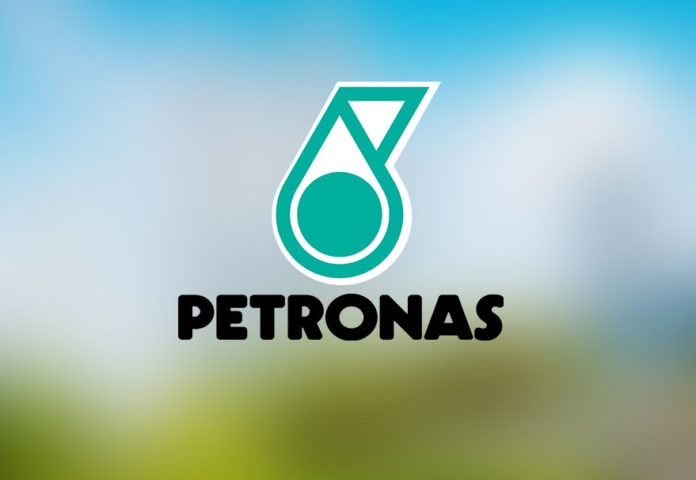- Petronas records higher profit after tax of RM23.5b in FY16
- Earning growth due to lower operating expenditure and tax expenses partially offset by lower average prices.
- Petronas to focus on group-wide efforts to reduce costs and sustain world-class operational efficiencies through collaborations within and outside the industry.
Kuala Lumpur, March 14, 2017: Petronas is in a stronger position heading into 2017 driven by its new structure, significant cost reductions and improved performance, its president and group chief executive officer (CEO), Datuk Wan Zulkiflee Wan Ariffin said today.
This comes after the national oil company saw its profit after tax grow 12% to RM23.5bil for the financial year ended Dec 31, 2016, from RM20.9bil in 2015.
Speaking after announcing its performance in 2016, Wan Zulkiflee said Petronas will continue to focus on its group-wide efforts to reduce costs and further improve efficiency and sustain world-class operational efficiencies through collaborations within and outside the industry.
“I am encouraged that Petronas has emerged from 2016 as a more resilient corporation with strong underlying performance driven by our We are in a stronger position heading into 2017,” he said.
Wan Zulkiflee, however, added that the company continues to maintain a conservative outlook for 2017 and expects prices to remain uncertain.
The Group’s revenue for the year dipped by 17 per cent to RM204.9 billion from RM247.7 billion in 2015.
The decrease reflected the lower average prices in line with the downward trend of key benchmark prices (Dated Brent and Japan Customs Cleared Crude) coupled with the impact of lower sales volume.
Cumulative 2016 Earnings Before Interest, Tax, Depreciation and Amortization (EBITDA) was RM70.4 billion compared to RM75.5 billion recorded in 2015.
Cash flows from the Group’s operating activities also decreased from RM69.6 billion in 2015 to RM53.8 billion due to lower average prices, partially offset by lower tax paid.
The Group’s continuous efforts to reduce cost had contributed in 8 per cent or RM4.1 billion decrease in controllable costs to RM49.1 billion compared to RM53.2 billion in 2015.
Total assets and shareholders’ equity increased to RM603.3 billion and RM380.3 billion respectively, contributed by the impact of weakening of Ringgit against US Dollar exchange rate and favourable movement on fair value of available-for-sale financial assets.
Gearing ratio increased to 17.4 per cent compared to 16.0 per cent recorded last year.
This was due to higher borrowings following additional drawdown made during the year. ROACE increased to 5.3 per cent compared to 5.1 per cent in 2015 in line with the Group’s higher profit.
Capital investments for the year was reduced by 22 per cent to RM50.4 billion following project deferment and rephasing as well as cost optimisation efforts.
Meanwhile, Petronas’ quarter four profits recorded a strong 85 per cent jump in PAT to RM11.3 billion from RM6.1 billion recorded in the previous quarter.
The RM5.2 billion increase was primarily driven by higher average realised product prices and sales volume mainly from LNG and processed gas as well as impact of favourable exchange rate partially offset by higher taxation.
Revenue rose by 20 per cent to RM58.6 billion from RM48.7 billion in the preceding quarter. EBITDA for the quarter also grew by 44 per cent to RM21.9 billion in line with the Group’s higher profits.
Upstream continued to focus on delivering its commitments across the oil and gas value chain while putting in measures to increase cash generation and optimise cost.
Malaysia and Petronas Group’s international total upstream production was 2,363 thousand boe per day in 2016, a three per cent increase compared to 2,290 thousand boe per day in 2015.
This was mainly driven by the resumption of operations of the Sabah-Sarawak Gas Pipeline, higher facilities uptime in Malaysia and Canada, and higher production from Malaysia, Indonesia and Australia.
Petronas Group’s total Liquefied Natural Gas (LNG) third party sales volume for the year was 29.01 million tonnes, marginally higher compared to 28.49 million tonnes in 2015 mainly contributed by higher volumes from Train 9 in Bintulu and GLNG in Australia, partially offset by lower trading volume.
Average sales gas volume for Malaysia in 2016 was higher as compared to 2015 in line with higher demand.
Among notable achievements in Upstream for 2016 include acquisition of four international blocks which include two recently acquired blocks in Mexico and two in Myanmar, the commissioning and delivery of first LNG cargo from Train 9, and successful commissioning of PFLNG Satu.
Petronas Downstream Business managed the impact of depressed market growth, lower product prices and spreads to record only a slight decline in the Group’s Downstream PAT from RM8.4 billion in 2015 to RM8.3 billion in 2016.
The collaborative efforts undertaken across the value chain led to higher utilisation of the Group’s manufacturing units in 2016. Petronas’ refineries in Malaysia and South Africa recorded strong refinery utilisation at 90.5 per cent and 89.9 per cent respectively.
Meanwhile, its petrochemical plants set a new record in utilisation since incorporation of 95.7 per cent, an improvement from the previous record of 85.3 per cent in 2015.
This led to an increase in petrochemical products sales volume by 14 per cent from 6.4 million metric tonnes to 7.3 million metric tonnes.
Rationalisation of marketing and trading strategies to drive value focused activities, resulted in higher margins despite lower sales volume.
Total petroleum products sales volume was 268.1 million barrels, 14.5 million barrels lower compared to 2015, while crude oil sales volume was 189.3 million barrels, 24.6 million barrels lower compared to the previous year.
Downstream projects continued to progress well.
The Pengerang Integrated Complex as at February 2017 is close to 60 per cent completion and is on track to commence operations by 2019. Recently, Petronas signed a Share Purchase Agreement with Saudi Aramco for a 50 per cent equity in selected ventures and assets of the RAPID project.
Meanwhile the Sabah Ammonia and Urea project is expected to begin commercial operations within the first half of 2017.
